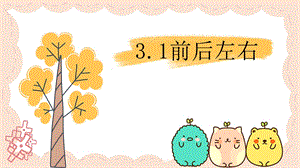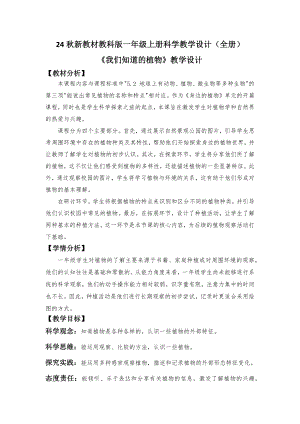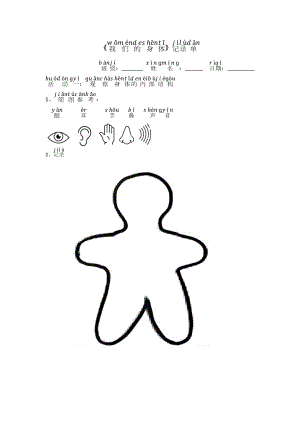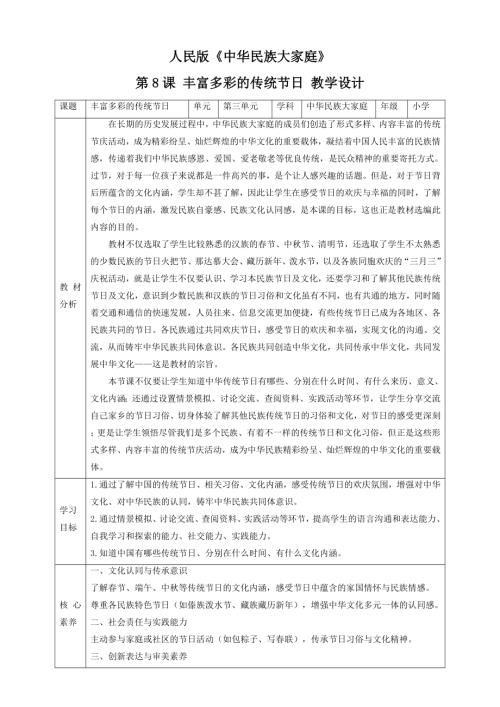 北京課改版六年級上冊英語教案 Unit Two Lesson 5.docx
北京課改版六年級上冊英語教案 Unit Two Lesson 5.docx
UNIT TWO I DIDNT SLEEP WELL LAST NIGHT一、教材背景和學(xué)情分析(一)本單元的話題和相關(guān)的語言知識本單元主要圍繞健康與習(xí)慣的話題以過去時(shí)態(tài)展開討論,能夠介紹自己的生活習(xí)慣;能夠用詢問他人身體健康狀況,能夠說明自己的身體哪里不適;能夠給他人提出合理的健康建議(二)相關(guān)內(nèi)容的上位知識分析以及本單元的教學(xué)重難點(diǎn)在四年級已經(jīng)學(xué)習(xí)過關(guān)于就醫(yī)的內(nèi)容如:Whats wrong/ the matter with you? Ive -. 以及健康建議功能句如:Youd better-. You should -在第一單元中已經(jīng)初步學(xué)習(xí)了一般過去時(shí)的基本結(jié)構(gòu)和用法. 本單元?jiǎng)t側(cè)重運(yùn)在具體語境中用過去時(shí)態(tài)表述過去經(jīng)歷或狀態(tài);鞏固一般過去時(shí)的基本結(jié)構(gòu)。本單元教學(xué)難點(diǎn)是恰當(dāng)運(yùn)用以wh /how開頭詢問過去發(fā)生的事情(三)語言知識點(diǎn)之間的聯(lián)系與整合;各單元間的鋪墊與延伸1. 單元之間的聯(lián)系:第一單元初步學(xué)習(xí)了一般過去時(shí)態(tài)的構(gòu)成和使用,第二單元是將該知識運(yùn)用于就醫(yī)情境中。2. 各課之間的聯(lián)系:Lesson 5: 討論不良習(xí)慣所致內(nèi)科疾病Lesson 6: 討論粗心大意所致外傷Lesson 7:討論不良飲食習(xí)慣所致牙疾(四)本單元知識點(diǎn)、考點(diǎn)的梳理1. 句式:功能句: 1. When did you go to bed?I went to bed at 11:30.2. What happened to your leg?來源:學(xué)科網(wǎng)I hurt myself.3. What did he say?He said I should stop eating too much chocolate and cakes課文中的句子:1. If you dont get enough sleep, you will feel sick.2. I didnt sleep well last night.3. How did that happen?I was late for school and rode too fast.4. What did he do?He pulled out the bad tooth.2. 語法:1. 動(dòng)詞過去式變化規(guī)則及特殊變化 2. 過去時(shí)特殊疑問句和否定形式變化3. Be動(dòng)詞過去式的特殊變化4. 身體部位+aches5. 情態(tài)動(dòng)詞must/should+V6. 賓語從句He said (that)-7. 停止做某事Stop+ V-ing3. 詞匯:原形:sleep, walk, have,see, be, hurt, stop, pull動(dòng)詞 過去式:walked, had, saw, was/ were, hurt, broke, pulled, 可以作為語法-ing形式:playing, smoking, drinking身體部位:head, face, nose, leg, tooth/teeth時(shí)間:last night, last month, this morning, tonight職業(yè):doctor, dentist介詞:at, to, off, out反身代詞:myself食物: chocolate2.語音:元音:e/ee, o/oo, 輔音:y二、單元目標(biāo)1. 能聽懂、會(huì)說有過去經(jīng)歷、狀態(tài)的功能用語,能用when did you -?對從事某事時(shí)間進(jìn)行問答;能用what happened to-?/ What did he said?對過去經(jīng)歷進(jìn)行詢問和回答。2. 能聽、說、讀、寫本單元的單詞,認(rèn)讀的短語。3. 掌握一般過去時(shí)的基本句式以when,what,how提問的特殊疑問句和否定句。4. 能正確地朗讀課文,表演對話。5. 能讀懂故事,完成閱讀理解,完成練習(xí)。三、本單元具體課時(shí)安排UNIT TWO I DIDNT SLEEP WELL LAST NIGHTLesson 5 第一課時(shí)一、教學(xué)內(nèi)容:1. 主題課文:Doctor: You look tired, young man.Baobao: Yes, doctor. I didnt sleep well last night. My head aches.Doctor: When did you go to bed?Baobao: I went to bed at 11:30. I played computer games.來源:學(xué)科網(wǎng)Doctor: If you dont get enough sleep, youll feel sick. Go to bed early tonight.2. 功能句:When did you go to bed?I went to bed at 11:30.3. 詞匯:四會(huì):sleep head sick tonight認(rèn)讀: walk / walked the dog / at 5 oclockhave / had dinner / at 6:30see/saw the film last month二、教學(xué)目標(biāo):(一)知識與技能:1.能聽懂、會(huì)說詢問何時(shí)從事某種活動(dòng)的功能句,并能按照情景做出正確的反應(yīng)。2.能認(rèn)讀sleep head sick tonight等詞,并在上下文中理解其含義。 3. 能正確地朗讀課文,表演對話。(二)過程與方法:1 通過圖片,對病癥進(jìn)行復(fù)習(xí)和補(bǔ)充。2 通過創(chuàng)設(shè)情景綜合運(yùn)用所學(xué)病癥的知識。(三)情感態(tài)度目標(biāo):改掉熬夜惡習(xí)養(yǎng)成良好生活習(xí)慣,保持強(qiáng)健體魄 三、教學(xué)重點(diǎn):1.句型:When did you go to bed? -I went to bed at 11:30.2.詞匯:動(dòng)詞過去式(以e 結(jié)尾直接+ d的動(dòng)詞 )、過去時(shí)時(shí)間狀語四、教學(xué)難點(diǎn):1. 理解過去時(shí)時(shí)態(tài)含義,了解表示過去時(shí)態(tài)的時(shí)間狀語, yesterday evening=last night etc.2. 掌握動(dòng)詞過去式變化規(guī)律:以e 結(jié)尾直接+ d的動(dòng)詞及過去式不規(guī)則變化3. 語言點(diǎn):wh /how開頭詢問過去發(fā)生的事情五、教學(xué)過程:(一)Warming-up:活動(dòng)一: 頭腦風(fēng)暴活動(dòng)目標(biāo): 激活已經(jīng)學(xué)過的關(guān)于活動(dòng)的詞組,為后面學(xué)習(xí)做準(zhǔn)備實(shí)施方法與師生語言預(yù)設(shè):Show the word “play”T: Can you tell me more phrases about play? If you know stand up, please dont repeat others.S: play football, play computer games-活動(dòng)二:Free Talk活動(dòng)目標(biāo): 復(fù)習(xí)過去時(shí)態(tài),導(dǎo)入主題課文實(shí)施方法與師生語言預(yù)設(shè):T: What did you do yesterday? / Did you -?S: I watched TV.-T: When did you watch TV? Did you watch TV at 7 oclock?S: I watched TV at -.T: Lets see our friend Baobao.What did he do? Whats the matter with him?(二)Presentation and practicing:活動(dòng)一:Look and say活動(dòng)目標(biāo):通過仔細(xì)觀察圖片得到信息,預(yù)測內(nèi)容,幫助理解課文內(nèi)容實(shí)施方法與師生語言預(yù)設(shè):出示主題圖T: Who are they? Where are they?Whats the matter with Baobao?S: Baobao and Doctor.S: Hospital.S: He has a headache.T: Yes. His head aches. 解釋aches活動(dòng)二:Listen and answer活動(dòng)目標(biāo):通過聽錄音檢索關(guān)鍵信息,理解文章實(shí)施方法與師生語言預(yù)設(shè):T: Listen and then answer these questions.Did he sleep well last night? Why?What did he do?When did he go to bed?來源:Z,xx,k.ComWhat should he do?播放錄音2遍S: No. He didnt sleep well. Because his head ached.He played computer games.He went to bed at 11:30.He should go to bed early.活動(dòng)三:Reading活動(dòng)目標(biāo):通過聽錄音模仿正確的語音語調(diào);通過聲音和文本輸入,為后面輸出做準(zhǔn)備實(shí)施方法與師生語言預(yù)設(shè):T: Listen and repeat and then tell me if Baobao didnt get enough sleep what will happen?Ss; Hell feel sick. 出示圖片理解sickT: Read by yourselfT: Read it with your partnerGroup show設(shè)計(jì)意圖:通過聽前、聽中、聽后三個(gè)步驟幫助學(xué)生理解文章內(nèi)容,理解有效獲取信息策略;從聲音到文字進(jìn)行輸入為后面輸出做準(zhǔn)備。(三)Production活動(dòng)一: 看圖說話活動(dòng)目標(biāo):鞏固練習(xí)本課功能句實(shí)施方法與師生語言預(yù)設(shè):逐一出示圖片,學(xué)生說出對應(yīng)詞組Ss: draw picture, play the piano, do homework, go swimming, have lunch說出對應(yīng)的動(dòng)詞過去式Ss: draw- drew, play-played, do-did, go-went, have-had仿照例句小組討論A: What did you do yesterday?B: I drew a picture.A: When did you draw picture?B: I drew picture at 8 oclock.活動(dòng)二: 填空活動(dòng)目標(biāo): 總結(jié)本課所學(xué)練習(xí)復(fù)述課文實(shí)施方法與師生語言預(yù)設(shè):出示短文Baobao _______computer games last night. He______ to bed at 11:30 and did not _____ well. His _____ ached terribly so he ______ to see the doctor. The doctor said if he _____not get enough sleep, he would feel _____. The doctor told him to go to bed ________.自己試著填小組討論訂正答案組內(nèi)朗讀(四)學(xué)習(xí)效果評價(jià)習(xí)題設(shè)計(jì):填空Baobao _______computer games last night. He______ to bed at 11:30 and did not _____ well. His _____ ached terribly so he ______ to see the doctor. The doctor said if he _____not get enough sleep, he would feel _____. The doctor told him to go to bed ________.(五)Homework:1. Finish students activity book.2. Read the dialogue.3. Dictate the new words六、板書設(shè)計(jì)七、課后小結(jié) Lesson 5 第二課時(shí)一、教學(xué)內(nèi)容:1. 功能句:When did you go to bed?I went to bed at 11:30.2. 詞匯:四會(huì):sleep head sick tonight認(rèn)讀: walk / walked the dog / at 5 oclockhave / had dinner / at 6:30see/saw the film last month3. Listen and choose4. Read and write5. Story time二、教學(xué)目標(biāo):(一)知識與技能目標(biāo):1能認(rèn)讀5個(gè)詞組。2 嘗試用過去時(shí)描述過去的狀態(tài)、動(dòng)作和經(jīng)歷。3. 能聽懂、理解小故事,并能跟隨錄機(jī)朗讀、講述故事,完成閱讀理解(二)過程與方法:1. 通過小組合作,看圖說話,編寫對話等方式讓學(xué)生在實(shí)際情境中應(yīng)用。2. 通過看圖編故事幫助學(xué)生鞏固應(yīng)用一般過去時(shí)。3.借助圖片、錄音幫助學(xué)生理解故事的內(nèi)容,并練習(xí)轉(zhuǎn)述。(三)情感態(tài)度與價(jià)值觀:培養(yǎng)學(xué)生自主創(chuàng)新,大膽實(shí)踐的精神。三、教學(xué)重難點(diǎn):(一)教學(xué)重點(diǎn):1. 過去式2. 能恰當(dāng)?shù)剡M(jìn)行句型替換練習(xí),理解句型含義。(二)教學(xué)難點(diǎn):1. 能聽懂、會(huì)說詢問何時(shí)從事某種活動(dòng)的功能句,并能在情景中運(yùn)用。2. 能聽懂、理解小故事并轉(zhuǎn)述四、教具準(zhǔn)備:錄音機(jī),單詞卡片,課件五、教學(xué)過程:(一)Warming-up:活動(dòng)一: 好搭檔活動(dòng)目標(biāo):復(fù)習(xí)動(dòng)詞過去式實(shí)施方法與師生語言預(yù)設(shè):Show some cards and ask pupils to spell the words.活動(dòng)二:Group show活動(dòng)目標(biāo):復(fù)習(xí)鞏固課文內(nèi)容實(shí)施方法與師生語言預(yù)設(shè):出示主題圖,回憶課文內(nèi)容,小組展示出示復(fù)述語段Baobao _______computer games last night. He______ to bed at 11:30 and did not _____ well. His _____ ached terribly so he ______ to see the doctor. The doctor said if he _____not get enough sleep, he would feel _____. The doctor told him to go to bed ________.(二)Presentation and practice:活動(dòng)一:看圖說話活動(dòng)目標(biāo):鞏固一般過去時(shí),擴(kuò)充新詞匯來源:學(xué)科網(wǎng)實(shí)施方法與師生語言預(yù)設(shè):出示第一幅圖片T: What did the woman do?Ss: She walked her dog.T: When did she walked her dog?Ss: She walked her dog at 5 oclock.其他圖片由學(xué)生在小組內(nèi)完成討論注意:did + 動(dòng)詞原形have-hadsee-saw每組挑一張卡片進(jìn)行表演活動(dòng)二:Listen and choose活動(dòng)目標(biāo):訓(xùn)練學(xué)生的聽力及閱讀句子的能力。實(shí)施方法與師生語言預(yù)設(shè):1. 請學(xué)生快速默讀三個(gè)句子,初步了解句子的內(nèi)容。T:Read the sentences and understand their meaning.(1). I didnt sleep well. I have a headache.(2). I watched a film.(3). I went to bed at half past eleven.教師播放錄音,請學(xué)生做出判斷。訂正答案活動(dòng)三: Read and write活動(dòng)目標(biāo):通過補(bǔ)全句中所缺單詞的方式,訓(xùn)練學(xué)生的閱讀、判斷句子的能力及拼寫單詞的能力。實(shí)施方法與師生語言預(yù)設(shè):1. 學(xué)生自己閱讀書上的句子,了解語境。2. 教師帶領(lǐng)學(xué)生復(fù)習(xí)本課單詞,了解單詞使用的語境。3. 請學(xué)生各自補(bǔ)全句子,將單詞填寫在橫線上。(1) Im so tired. I didnt ______ well last night. I feel ______.(2) I wont go to bed early _____. I will watch the final game of the NBA.(3) Whats wrong with your ______?-I hurt myself when I played football.4. 學(xué)生小組討論所填的答案。5. 糾正答案并講解錯(cuò)誤率高的題。6. 朗讀補(bǔ)全后的句子。活動(dòng)四:Story time來源:學(xué)+科+網(wǎng)Z+X+X+K活動(dòng)目標(biāo):活動(dòng)目標(biāo):理解故事內(nèi)容,培養(yǎng)學(xué)生的閱讀能力。實(shí)施方法與師生語言預(yù)設(shè):出示圖片討論T: What did Mike do?What happed to him?Listen and then answer these questionsWhat did Mike see in his dream?Why did Mike have a frightening dream?Do you dream sometimes?打開書自己閱讀找到答案訂正圈出動(dòng)詞詞組:watched film, went to bed, fell asleep, had a dream, saw a lion, ran back home設(shè)計(jì)意圖:通過錄音,掛圖等幫助學(xué)生理解故事內(nèi)容,提高學(xué)生的閱讀能力,圈畫詞組強(qiáng)化過去式認(rèn)讀。(三)Production:活動(dòng)一: Jim and Fish活動(dòng)目標(biāo):通過創(chuàng)編新的故事,使學(xué)生能夠在相應(yīng)的情境中靈活運(yùn)用所學(xué),提高學(xué)生的語言綜合運(yùn)用能力實(shí)施方法與師生語言預(yù)設(shè):A B C DE F出示六幅圖片讓學(xué)生認(rèn)真觀察想象,排出故事順序小組討論描述圖片內(nèi)容補(bǔ)全句子排序1. After dinner, Jim ______ (tell) the fish that he _____(feel) very tired.2. One day on Jims way home, he ____(meet) a little fish. The fish ____(say) he can help him. Jim ______(is) surprised.3. And then he _______(take) the fish to his house.4. They ______ dinner together.5. The little fish _______(take) Jim to a special swimming pool. Jim ______(swim) in the pool with the fish. He _____ very happy.6. After that, the little fish _____(tell) Jim he must _____ home. He _____(wish) Jim could be happy forever.參考答案:B, C, E, A, D, F設(shè)計(jì)意圖:(四)學(xué)習(xí)效果評價(jià)習(xí)題設(shè)計(jì):(1) Im so tired. I didnt ______ well last night. I feel ______.(2) I wont go to bed early _____. I will watch the final game of the NBA.(3) Whats wrong with your ______?-I hurt myself when I played football.(五)Homework: 1. Read or recite the text.2. Activity book.六、板書設(shè)計(jì):課后反思:
- 關(guān) 鍵 詞:
- 北京課改版六年級上冊英語教案 Unit Two Lesson 北京 改版 六年級 上冊 英語教案
 叮當(dāng)云教育所有資源均是用戶自行上傳分享,僅供網(wǎng)友學(xué)習(xí)交流,未經(jīng)上傳用戶書面授權(quán),請勿作他用。
叮當(dāng)云教育所有資源均是用戶自行上傳分享,僅供網(wǎng)友學(xué)習(xí)交流,未經(jīng)上傳用戶書面授權(quán),請勿作他用。 關(guān)于本文
相關(guān)資源
 北京課改版小學(xué)英語六年級上冊課文+單詞mp3(全冊).rar
北京課改版小學(xué)英語六年級上冊課文+單詞mp3(全冊).rar  北京課改版五年級上冊英語課文音頻mp3全冊.rar
北京課改版五年級上冊英語課文音頻mp3全冊.rar  北京課改版五年級上冊英語Lesson002課文朗讀音頻.mp3
北京課改版五年級上冊英語Lesson002課文朗讀音頻.mp3  北京課改版五年級上冊英語Lesson020課文朗讀音頻.mp3
北京課改版五年級上冊英語Lesson020課文朗讀音頻.mp3  北京課改版五年級上冊英語Lesson010課文朗讀音頻.mp3
北京課改版五年級上冊英語Lesson010課文朗讀音頻.mp3  北京課改版五年級上冊英語Lesson019課文朗讀音頻.mp3
北京課改版五年級上冊英語Lesson019課文朗讀音頻.mp3  北京課改版五年級上冊英語Lesson009課文朗讀音頻.mp3
北京課改版五年級上冊英語Lesson009課文朗讀音頻.mp3  北京課改版五年級上冊英語Lesson013課文朗讀音頻.mp3
北京課改版五年級上冊英語Lesson013課文朗讀音頻.mp3  北京課改版五年級上冊英語Lesson003課文朗讀音頻.mp3
北京課改版五年級上冊英語Lesson003課文朗讀音頻.mp3  北京課改版五年級上冊英語Lesson017課文朗讀音頻.mp3
北京課改版五年級上冊英語Lesson017課文朗讀音頻.mp3 


 24新教材大象版一年級上冊科學(xué)1 前后左右 課件.pptx
24新教材大象版一年級上冊科學(xué)1 前后左右 課件.pptx  24新教材大象版一年級上冊科學(xué)2 常見的動(dòng)物 課件.pptx
24新教材大象版一年級上冊科學(xué)2 常見的動(dòng)物 課件.pptx  24新教材大象版一年級上冊科學(xué)3 我喜歡的動(dòng)物 課件.pptx
24新教材大象版一年級上冊科學(xué)3 我喜歡的動(dòng)物 課件.pptx  24新教材大象版一年級上冊科學(xué)體驗(yàn)單元《畫螞蟻》 課件.pptx
24新教材大象版一年級上冊科學(xué)體驗(yàn)單元《畫螞蟻》 課件.pptx  24新教材大象版一年級上冊科學(xué)2 感官的本領(lǐng) 課件.pptx
24新教材大象版一年級上冊科學(xué)2 感官的本領(lǐng) 課件.pptx  24新教材大象版一年級上冊科學(xué)1 辨別真假水果 課件.pptx
24新教材大象版一年級上冊科學(xué)1 辨別真假水果 課件.pptx  24新教材大象版一年級上冊科學(xué)3 水果分享會(huì) 課件.pptx
24新教材大象版一年級上冊科學(xué)3 水果分享會(huì) 課件.pptx  24新教材大象版一年級上冊科學(xué)反思單元《竺可楨的觀察日記》 課件.pptx
24新教材大象版一年級上冊科學(xué)反思單元《竺可楨的觀察日記》 課件.pptx  24新教材大象版一年級上冊科學(xué)2 月亮“變臉”課件.pptx
24新教材大象版一年級上冊科學(xué)2 月亮“變臉”課件.pptx  24新教材大象版一年級上冊科學(xué)1 月亮什么樣 課件.pptx
24新教材大象版一年級上冊科學(xué)1 月亮什么樣 課件.pptx  24新教材大象版一年級上冊科學(xué)1 觀察兔子 課件.pptx
24新教材大象版一年級上冊科學(xué)1 觀察兔子 課件.pptx  24新教材大象版一年級上冊科學(xué)3 白天與夜晚 課件.pptx
24新教材大象版一年級上冊科學(xué)3 白天與夜晚 課件.pptx  24新教材大象版一年級上冊科學(xué)3 太陽的位置變化 課件.pptx
24新教材大象版一年級上冊科學(xué)3 太陽的位置變化 課件.pptx  24新教材大象版一年級上冊科學(xué)2 東南西北 課件.pptx
24新教材大象版一年級上冊科學(xué)2 東南西北 課件.pptx  24秋新教材教科版一年級上冊科學(xué)教學(xué)設(shè)計(jì)(全冊教案總61頁).docx
24秋新教材教科版一年級上冊科學(xué)教學(xué)設(shè)計(jì)(全冊教案總61頁).docx  24秋新教材教科版一年級上冊科學(xué)2.1《我們的身體》實(shí)驗(yàn)記錄單.docx
24秋新教材教科版一年級上冊科學(xué)2.1《我們的身體》實(shí)驗(yàn)記錄單.docx  人民版《中華民族大家庭》第4課我們都是中國公民 課件.pptx
人民版《中華民族大家庭》第4課我們都是中國公民 課件.pptx  人民版《中華民族大家庭》第6課 共同建設(shè)美好家園 課件.pptx
人民版《中華民族大家庭》第6課 共同建設(shè)美好家園 課件.pptx  人民版《中華民族大家庭》第8課 豐富多彩的傳統(tǒng)節(jié)日 課件.pptx
人民版《中華民族大家庭》第8課 豐富多彩的傳統(tǒng)節(jié)日 課件.pptx  人民版《中華民族大家庭》第7課 中華民族的語言文字 課件.pptx
人民版《中華民族大家庭》第7課 中華民族的語言文字 課件.pptx  人民版《中華民族大家庭》第4課我們都是中國公民 教案 核心素養(yǎng).doc
人民版《中華民族大家庭》第4課我們都是中國公民 教案 核心素養(yǎng).doc  人民版《中華民族大家庭》第5課 美麗河山我們的家 課件.pptx
人民版《中華民族大家庭》第5課 美麗河山我們的家 課件.pptx  人民版《中華民族大家庭》第8課 豐富多彩的傳統(tǒng)節(jié)日 教案 核心素養(yǎng).doc
人民版《中華民族大家庭》第8課 豐富多彩的傳統(tǒng)節(jié)日 教案 核心素養(yǎng).doc  北師大版三年級下冊心理健康第20課《班集體以我為榮》課件.pptx
北師大版三年級下冊心理健康第20課《班集體以我為榮》課件.pptx  北師大版三年級下冊心理健康第15課《真心原諒他人》課件.pptx
北師大版三年級下冊心理健康第15課《真心原諒他人》課件.pptx  北師大版三年級下冊心理健康第19課《每天自省五分鐘》課件.pptx
北師大版三年級下冊心理健康第19課《每天自省五分鐘》課件.pptx  北師大版三年級下冊心理健康第13課《學(xué)習(xí)方法提高效率》課件.pptx
北師大版三年級下冊心理健康第13課《學(xué)習(xí)方法提高效率》課件.pptx  北師大版三年級下冊心理健康第18課《這樣做才是真正的朋友》課件.pptx
北師大版三年級下冊心理健康第18課《這樣做才是真正的朋友》課件.pptx  北師大版三年級下冊心理健康第16課《防止上當(dāng)受騙》課件.pptx
北師大版三年級下冊心理健康第16課《防止上當(dāng)受騙》課件.pptx  北師大版三年級下冊心理健康第17課《和拖延說再見》課件.pptx
北師大版三年級下冊心理健康第17課《和拖延說再見》課件.pptx  北師大版(2019)三年級下冊心理健康課件ppt+素材(全冊打包下載).rar
北師大版(2019)三年級下冊心理健康課件ppt+素材(全冊打包下載).rar 

